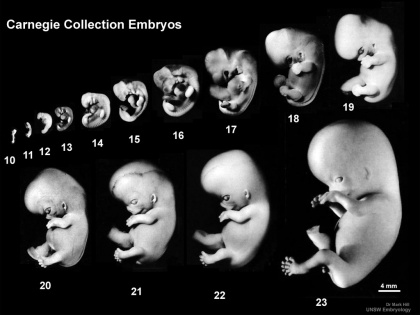Our bodies are literally littered with our ancestral past. And for a time people couldn’t explain why we had certain traits that were either very odd or served no purpose. Starting in the 18 hundreds paleontologists and biologists were beginning to explain and examine these enigmas. Today biologists and physical anthropologists explain them as either vestigial structures, atavism, or pseudogenes.
Vestigial Structures: 
Vestigial structures are like souvenirs of the past, more specifically our evolutionary past. These traits are being expressed in the body but have no use or a use that does not reflect its original function/adaption to be used for its original purpose. This reflects that all organisms have a common ancestry and certain groups share a common descent . This also reflects divergent evolution, which means different groups of animals with a common ancestor adapt to the variety of environmental conditions. And as other features of our body become less important for the environment we live in, they might eventually become a vestigial organ.
Appendix
The apendix is a small organ left over from when our ancestors had a largely plant diet. The organ was critically important for breaking down cellulose ( fiber). But now in humans it has become so small, compared to animals like cows, that it has no role in the digestion system, and some people are even born without one. The appendix has even become dangerously small that one in fifteen people will suffer from appendicitis, which left untreated can become life threatening. But whether or not the organ is good or bad it is still a vestigial organ for it doesn’t perform its original function. The organ may even be on its way out but with modern medicine and surgery to treat appendicitis the natural selective pressures have mostly been taken away from people with appendixes.
Coccyx
The coccyx or tail bone, hint hint, is our vestigial tail. Our coccyx is now composed of seven tightly fused bones connected to the end of the vertebrae. It does still have some function, being used for useful muscle attachment for our bipedal locomotion, but remember it’s still a vestigial structure because it no longer has its original function it was evolved for. Some people are even born with a rudimentary tail muscle that is attached to the coccyx. It is also identical to other animals that have a tail. But since the coccyx doesn’t move the muscle is useless. You may be sitting on it and not even notice!
Arrector Pili 

Ever see a scary movie and get goosebumps? Goosebumps are created by the muscle arrector pilli that is attaches to your body hairs. The muscle is useless now in humans because we also have vestigial body hair. But the original purpose is to raise fur to create heat and insulation and to express behaviors to look bigger and also warn off predators.
Ear muscles

If you can wiggle your ears you are demonstrating a vestigial trait. These are the same three muscles attached to animals like cats or deer, used to locate sound to protect them from predators and so on. But there was a evolutionary trade-off that began with our ancestors to have color and stereoscopic vision( helpful in trees) , sacrificing good sense of hearing as well as smell.
Atavisms:

On rare occasions an individual will have a anomaly that looks like the reappearance of an ancestral trait. To have a atavism it must be the re -expression (gene expression) of a ancestral trait. For example someone with an extra limb does not have an atavism because none of our ancestors have five legs. But why do atavisms occur? It comes from the re-expression of genes that was once functional in our ancestors but then “turned-off” by natural selection when they were no longer needed. Yet these silenced genes in our genome can be be “turned on” again when something goes askew in development.
Human Tail 
The most striking atavins in our own specious is the human tail. Human tails are true atavisms because we carry exactly the same gene to make a tail also found in other animals. We actually had a tail when we were just an embryo, but after seven weeks of development these genes are deactivated from further growth and the tail is reabsorbed by the body. But rarely the genes aren’t “turned off” and we have people with tails.
Pseudogenes 
To continue with the ‘turned off” genes, scientists have discovered that in humans and other animals there are loads of genes that are no longer “tuned on” or expressed (gene expression). These genes that are no longer functioning are called pseudogenes. Essentially they are like vestigial genes for they don’t function the way they were once evolved to do.
Vitamin C

A popular example of pseudogenes in humans and all other anthropoid primates is our inability to produce vitamin C. Vitamin C is essential for a healthy metabolism, and virtually all mammals produce all the vitamin C they need. But not anthropoid primates and some other mammalian lineages like the guinea pigs, and fruit bats. And the reasons why we don’t produce vitamin C is because we obtain enough from our diet being able to eat and digest vitamin C from fruit. Yet in our genome we still carry the mutated pseudogene GLO which creates the enzyme to produce Vitamin C. Shows that vitamin C synthesis is also an ancestral trait of mammals and that this trait has been lost in three mammalian lineages: bats, guinea pigs and anthropoid primates.
A Video about vestigial structures hosted by a funny guy Hank Green who talks a lot about science in the YouTube channel SciShow.